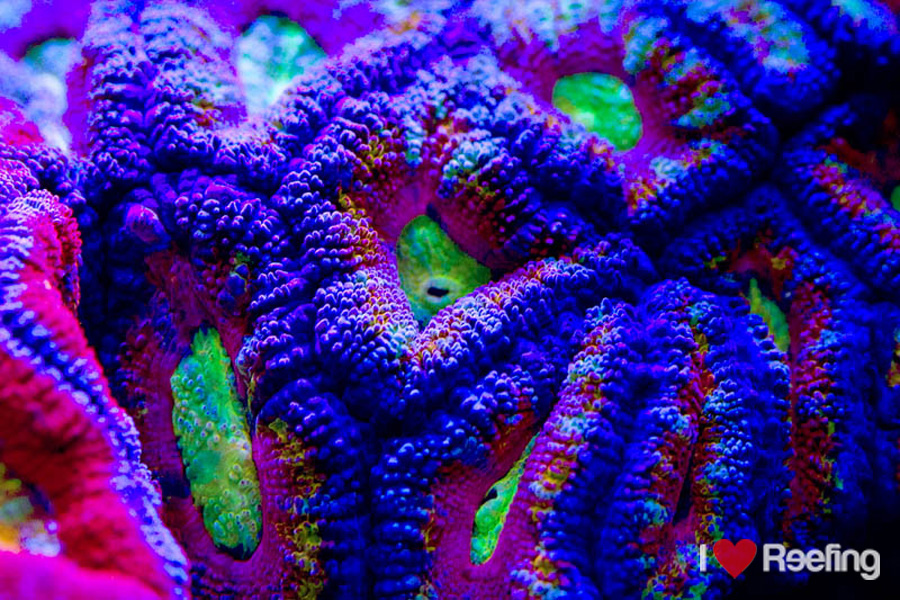In the first and second part of our guide we focused on the basics, how to feed corals and what the most important facts for healthy corals are.
How can stone corals be fed the best possible way? First, a short overview:
SPS:
- They prefer particle sizes between 20-50 microns (e.g. Acropora). Ideal is a a range between 20-150 microns.
- Flow is crucial. During the addition of the food it’s important to regulate down the pumps and slowly brin it up within 20-30 minutes. This enables different flow rates.
- Alternate feeding time at night and during the day, that all species get something.
- Promote natural zoo and bacterioplankton
- Enrichment with amino acid is recommended
LPS:
- Cell sizes between 1500-3000 microns
- Direct feeding by pipette possible
- Copecoden, Calanus, Mysis, Artemia, and more
- Some species, such as Lobophyllia polyps extraction must provided at first (e.g. amino acids and vitamins).
What is being fed:
SPS
- 1 drop of amino acids / day on 100l
- 1 drop Coral Nectar (vitamins and supplements) / day on 100l
Bacterioplankton:
- 1ml NYOS Zero / 100l daily (carbon source causes a decrease of NO3/PO4 and boost the bacterial population.)
LPS:
- 2x a week NYOS Goldpods and oyster eggs by using a pipette to feed the LPS directly on their mouth
- 2x weekly Reef Pepper (particle size min. 20 microns) enriched with daily ration of amino acid & Coral Nectar
Promotion of natural zooplankton
The Reef Pepper supports an extreme boost to my microorganisms and sponges that has a positive effect on the growth of corals. An offshoot in my sump with a lot of live rock acts as an additional refugium.
How to feed:
The corals are fed in the evening about 1-3 hours before turning off the lights. So “diurnal corals” get their food – but there is still enough food in the water for the corals, that open their polyps at night. Different areas of the tank are supplied separately – the outlet shaft in which is a large population of plankton gets its boost with Pepper Reef for some times, and aswell the refugium in the sump.
Smooth laminar flow is also important for the accommodation of the food, and the different requirements towards the flow rate needs to be considered. I switch on the feed mode at my Vortechs (about 10 minutes) and then turn to a changing flow. Overnight shutdown is also recommended.
Personal observations:
Targeted feeding brings a lot of positive aspects. The color saturation of the corals increases, and they grow visibly faster and build up more compact branches. The individual branches are getting thicker the coral looks vital. A great polyp expansion appears when the corals get used to the regular feeding.
Amino acids promote especially the bold colors. It is critical not to overdose, otherwise the corals may darken.
The disadvantage that needs to be mentioned of the active feeding is that it affects all residents, including the hated aiptasia. These get the food as well. Animal helpers (filefish, various shrimp) should help to get a long with it. Aiptasia are solely in in my outlet shaft.
Conclusion
The feeding of corals is a good way to improve the colors and vitality of coral fundamentally. It only makes sense, if the water parameters and nutrient values are constant and a good and sufficient light and flow is available. Especially in tanks that are on zero nitrate and phosphate the active feeding is recommendable.
The indirect feeding by an increase of the natural zooplankton should also always be targeted – also due to the fact that we maintain a variety of fish, pick the whole day on the stones. With the products mentioned above, we could provide a constant stability in bold colors and vitality for about a year.
Kindly supported by: www.reefcare.de

1 comment on “Feeding of stony corals part III – best practice”